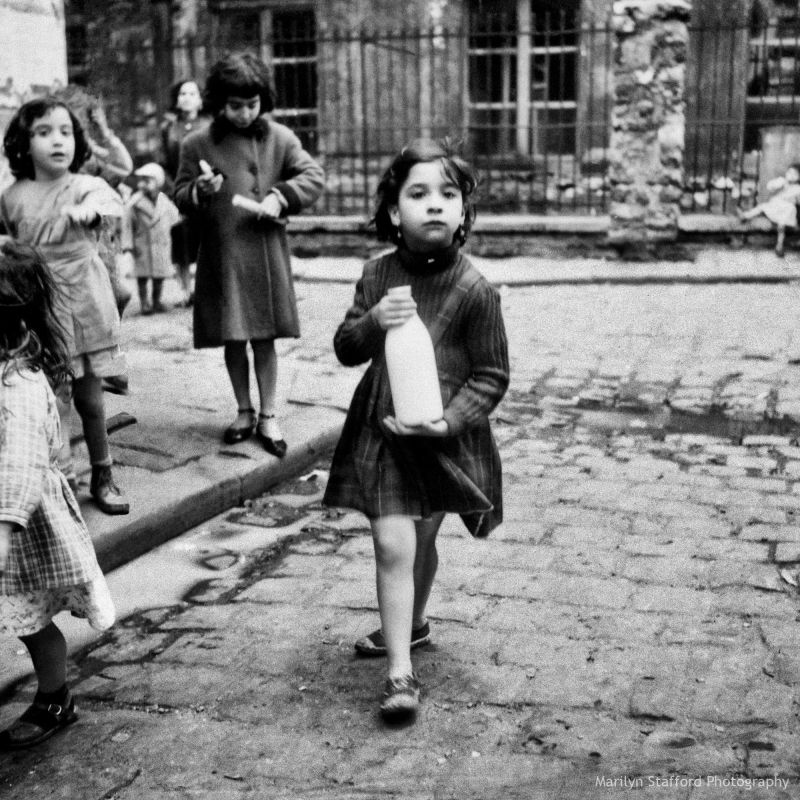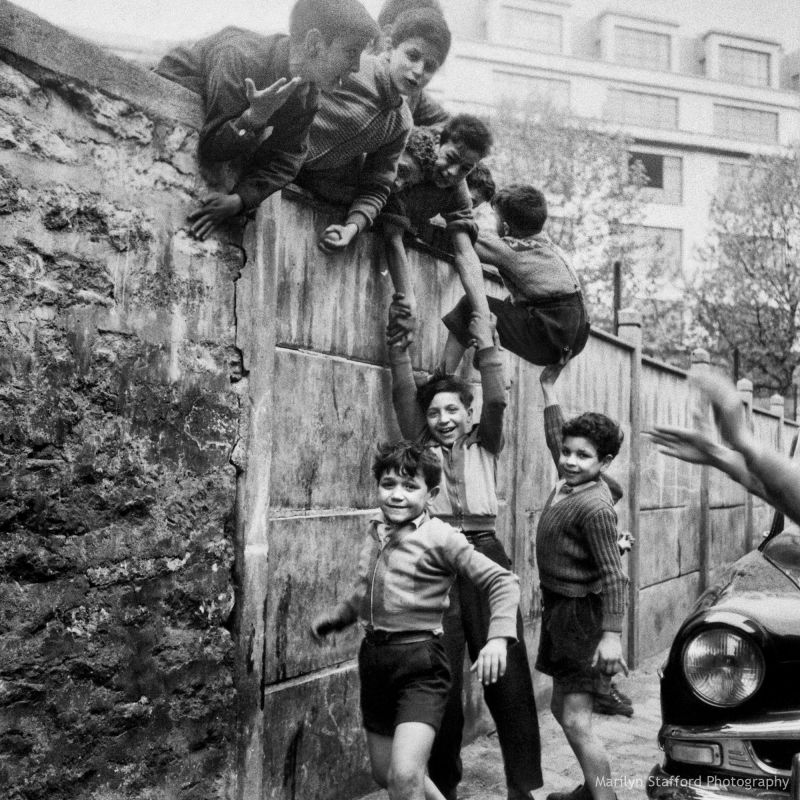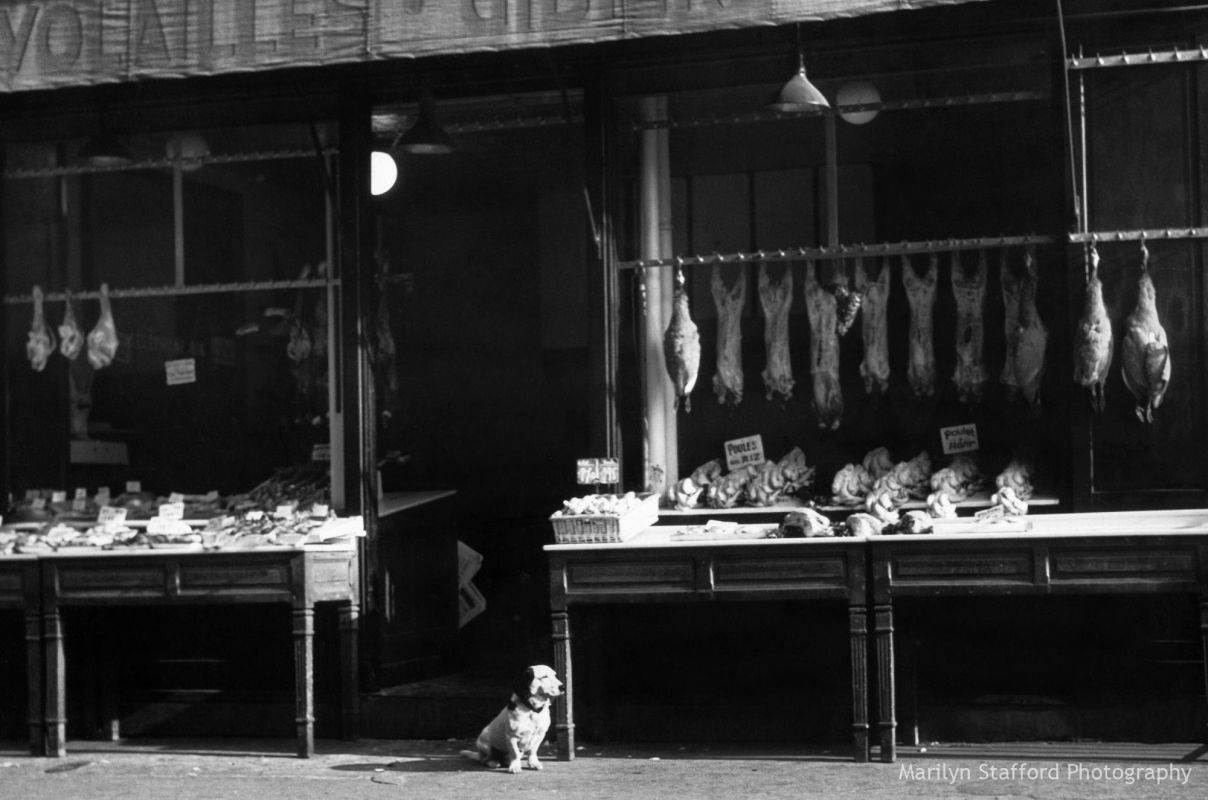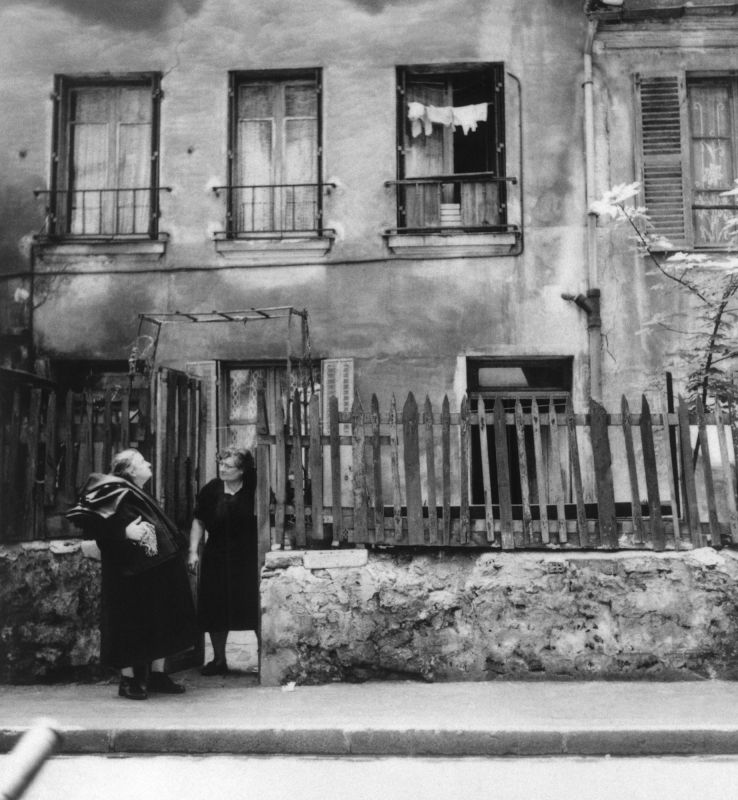During her early days in Paris, Stafford would get on a random bus and get off at the end of the line. One day she was enticed down a small passage near the Place de la Bastille, where she found a neighbourhood with slum housing called Cité Lesage-Bullourde. Built around 1864, for many years it housed a mixture of small craft workshops and households in unsanitary and cramped conditions. Many of its inhabitants were immigrants. She found lots of children in the streets; there were no playgrounds for them to go to and she suspected most of their parents were working. She was not from the quartier, so the children were curious about her. They were warm and friendly and some of them even ‘performed’. The Cité Lesage-Bullourde was demolished in 1984, which made way for the new Paris Opéra and expensive modern apartment blocks. A small passage bearing the neighbourhood’s name is all that remains.
PARIS STREET 1950s
Encouraged by her friend and mentor Henri-Cartier Bresson to go onto the streets of Paris and take pictures, Stafford discovered both Boulogne-Billancourt , site of the Renault car factory and the overcrowded slum Cite Lesage-Bullourde, near the Bastille.
A maze of blind alleys and passages, this over crowded slum, built around 1864, for many years had housed a mixture of small craft workshops and households in unsanitary and cramped conditions. Many of its inhabitants were immigrants.
The Cite Lesage-Bullourde was demolished in 1984 to make way for the new Paris Opera – Bastille and expensive modern apartment blocks. A small “passage” bearing its name and some modern buildings are all that remain.

Children strike a pose, Cité Lesage-Bullourde, Paris, c1950.
Children strike a pose, Cité Lesage-Bullourde, Paris, c1950.

Girl with milk bottle, Cité Lesage-Bullourde, Paris, c1950.
Girl with milk bottle, Cité Lesage-Bullourde, Paris, c1950.

Boys climbing wall, Cité Lesage-Bullourde, Paris, c1950.
Boys climbing wall, Cité Lesage-Bullourde, Paris, c1950.

Girl in high heels, Cité Lesage-Bullourde, Paris, c1950.
Girl in high heels, Cité Lesage-Bullourde, Paris, c1950.

Boy on pavement with book, Cité Lesage-Bullourde, Paris, c1950.
Boy on pavement with book, Cité Lesage-Bullourde, Paris, c1950.

Children in the Cité Lesage-Bullourde, Paris, c1950.
Children in the Cité Lesage-Bullourde, Paris, c1950.

Child leaning over, Boulogne-Billancourt, Paris, c1950.
Child leaning over, Boulogne-Billancourt, Paris, c1950.

Boys playing on the street, Boulogne-Billancourt, Paris, c1950.
Boys playing on the street, Boulogne-Billancourt, Paris, c1950.

School classroom, Boulogne-Billancourt, Paris, c1950.
School classroom, Boulogne-Billancourt, Paris, c1950.

Woman asleep in pram, Boulogne-Billancourt, Paris, c1950.
Woman asleep in pram, Boulogne-Billancourt, Paris, c1950.

Rough sleepers, Boulogne-Billancourt, Paris, c1950.
Rough sleepers, Boulogne-Billancourt, Paris, c1950.

Watching from the window, Boulogne-Billancourt, Paris, c1950.
Watching from the window, Boulogne-Billancourt, Paris, c1950.
Prev
Next





